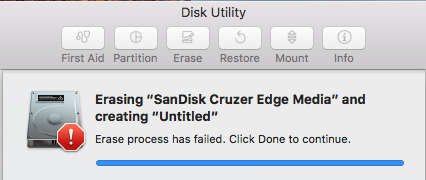
When using terminal it is important to type all commands exactly as they appear in this guide. For drives that cannot be disconnected, please make sure you have current backups of those drives. Note: We strongly recommend that you disconnect any externally mounted drives at this point, to prevent accidentally destroying the data on those drives. Please read the notes below before proceeding:
Mac couldn t unmount disk Pc#
The corruption chances of the external drive increases, if it is used on both Mac and PC systems regularly.Like FAT32, ex-FAT is not a very commonly used file system, due to which its support may vary among third-party devices.Ex-FAT supports maximum volume size up to 128 PiB, and its supported maximum file size is 128 PiB.Therefore, it is better to choose ex-FAT instead. Due to some limitations FAT32 format is not useful for every type of user, and also affects both Mac’s and PC’s performances.

Mac couldn t unmount disk windows#
Format your Western Digital My Passport external hard drive to FAT32 or ex-FAT format so to transfer the data between a Mac and Windows system conveniently.Once formatting is done, you can use the drive in macOS or OS X as a regular hard drive.

Now, click the ‘Erase,’ button and wait a few minutes and let the macOS erase data on the drive and reformat it by FAT32 or ex-FAT format.Now, the Erase dialogue window appears, here select the ‘Volume Format’ drop-down list and choose ‘MS-DOS (FAT)’ or ex-FAT File System.’ Note: ex-FAT is a better choice for formatting WD My Passport on Mac.

Click ‘Erase’ on the Disk Utility file menu.When the Disk Utility opens, choose the Western Digital hard drive icon from the sidebar.From the Utilities folder window, select ‘Disk Utility’ application. When the Finder window opens, on the menu bar, select ‘Go’ and then ‘Utilities.’ After that, you will be able to see /Applications/Utilities folder in Finder. Now, a new hard drive icon will appear on the desktop. Connect your Western Digital My Passport drive to Mac computer, and let the OS detect and mount the drive for use.After successful formatting, you can directly save or move files to it like any other external hard drive. Now, again select a ‘Quick Format’ option, then click ‘Start’ option, wait for a few minutes to get your drive reformatted with the FAT32 file system, so that you can use it.


 0 kommentar(er)
0 kommentar(er)
